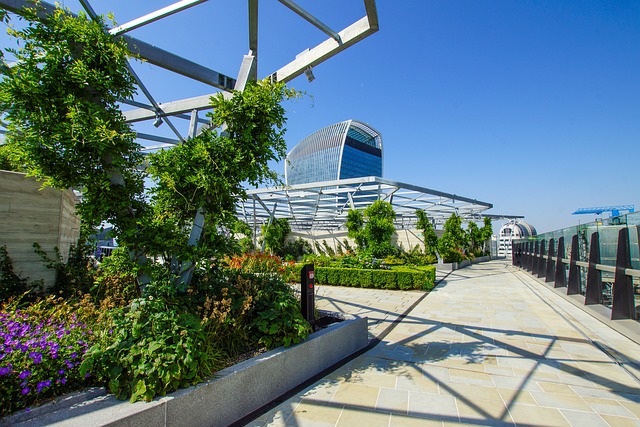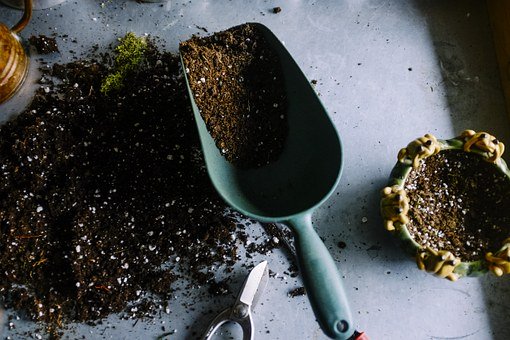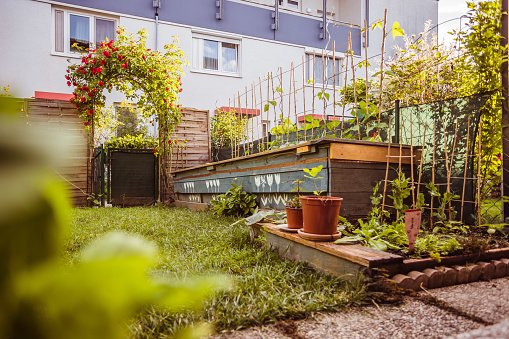7 Simple Tips on Container Gardening 2024
[et_pb_section fb_built=”1″ admin_label=”section” _builder_version=”3.22″][et_pb_row admin_label=”row” _builder_version=”3.25″ background_size=”initial” background_position=”top_left” background_repeat=”repeat”][et_pb_column type=”4_4″ _builder_version=”3.25″ custom_padding=”|||” custom_padding__hover=”|||”][et_pb_text admin_label=”H2 – Your container garden doesn’t become perfection overnight” _builder_version=”4.8.1″ background_size=”initial” background_position=”top_left” background_repeat=”repeat”]
Your Container Garden Doesn’t Become Perfection Overnight
[/et_pb_text][et_pb_text _builder_version=”4.8.1″ _module_preset=”default” hover_enabled=”0″ sticky_enabled=”0″]
All plants have completely different needs. Think of your plants as people. Some people have allergies to nuts, some have allergies to shellfish, some have allergies to pollen, and so they will each have their own medications and treatments available to cater to their individual needs.
Plants are the same.
Don’t get overwhelmed.
Many people, and I am guilty of this too, try to get everything absolutely perfect in the beginning. But when you are new to something, you need to practice and practice until you get it right.
Perfection does not happen overnight.
[/et_pb_text][et_pb_text admin_label=”H2 – why don’t my container plants grow” _builder_version=”4.8.1″ _module_preset=”default”]
Why Don’t my Container Plants Grow?
[/et_pb_text][et_pb_text _builder_version=”4.8.1″ _module_preset=”default” hover_enabled=”0″ sticky_enabled=”0″]
It’s very disheartening when you spend time working on your container plants and then nothing happens, or they start to grow and then suddenly stop.
The first time I planted butternut seeds into the ground, I thought I was doing so well.
The seeds germinated fast, the plants had these gorgeous, deep green leaves that were starting to grow across the ground and the tendrils were stretching looking for things to anchor onto.
And then the leaves got full of mildew and fell off! I had no idea that the soil was such poor quality and that mildew on plant leaves was even a thing!
But, everything is a learning curve, and that’s when I decided it would be easier to look after and control plants in containers.
Below are 7 simple tips for you to know when you start container gardening.
[/et_pb_text][et_pb_text admin_label=”H2 – 7 Best tips to start container gardening” _builder_version=”4.8.1″ _module_preset=”default”]
7 Best Tips to Start Container Gardening
[/et_pb_text][et_pb_text _builder_version=”4.8.1″ _module_preset=”default” hover_enabled=”0″ sticky_enabled=”0″]
Follow these simple steps with container gardening and you’ll be well on your way to munching on the freshest, crispest foods or picking gorgeously, colourful flowers for your home.
[/et_pb_text][et_pb_text admin_label=”H3 – Tip 1: get a variety of containers” _builder_version=”4.8.1″ _module_preset=”default”]
Tip 1: Get a variety of containers
[/et_pb_text][et_pb_text _builder_version=”4.8.1″ _module_preset=”default” hover_enabled=”0″ sticky_enabled=”0″]
What will work for your tomato plant, will not necessarily work for your pumpkin plants.
I collected a variety of containers. These are the ones that I found worked the best for my plants:
– Seedling trays
– Glass jars (for propogation)
– Plastic cups
– Grow bags
– Pot plant holders
– Dog food buckets
– Terracotta pots
– Plastic tubs
– Plastic 2-liter cooldrink bottles
The best rule is, the larger the better for the plant.
[/et_pb_text][et_pb_text admin_label=”H3 – Tip 2: don’t use soil from your garden” _builder_version=”4.8.1″ _module_preset=”default”]
Tip 2: Don’t use soil from your garden
[/et_pb_text][et_pb_text _builder_version=”4.8.1″ _module_preset=”default” hover_enabled=”0″ sticky_enabled=”0″]
Here’s an important tip for you: avoid using garden soil!
If you take any of the tips on container gardening away with you, THIS is the one to remember.
Garden soil is too heavy and compact for container gardening, which can make it difficult for your plants to thrive in the limited space of a pot.
This is because the roots of your plants need enough room to grow and access nutrients, and using garden soil in a pot could suffocate them or even lead to drowning. That’s why it’s highly recommended to use potting soil instead, as it offers better aeration and drainage that your plants need to thrive.
Before planting in your potting soil, consider mixing in some compost or vermicompost to enrich it with additional nutrients that your plants will love. This will help promote healthy growth and give your container garden an extra boost.
Remember, your plants will be growing in a limited space the size of the container, and the roots need space to grow. If you use garden soil in a pot, the roots could suffocate or even drown.
Sometimes you can find weed-free potting soil which is even better! So next time you’re setting up your container garden, remember to choose the right soil to give your plants the best chance of success.
[/et_pb_text][et_pb_text admin_label=”H3 – Tip 3: track the sunlight” _builder_version=”4.8.1″ _module_preset=”default”]
Tip 3: Track the sunlight
[/et_pb_text][et_pb_text _builder_version=”4.8.1″ _module_preset=”default”]
Before you start setting up your container garden, select an area where you would like to grow your plants and then monitor the sun for a day or two.
How much sun reaches this spot? Is it in the morning, afternoon, or the whole day? Does the entire area get sunlight, or do parts remain in the shade?
This will help you determine the best plants to grow.
[/et_pb_text][et_pb_text admin_label=”H3 – Tip 4: Plant supports” _builder_version=”4.8.1″ _module_preset=”default”]
Tip 4: Plant supports
[/et_pb_text][et_pb_text _builder_version=”4.8.1″ _module_preset=”default”]
Container gardening does limit the space that your plant has to grow, but you are most likely doing this because you have limited space.
You can easily help your plants to grow vertically by providing them with a trellis. And you don’t need to go out and buy one, you can quite easily make one from bamboo, wire, or wood you have lying around in your garage.
[/et_pb_text][et_pb_text admin_label=”H3 – Tip 5: Fertilize your plants” _builder_version=”4.8.1″ _module_preset=”default”]
Tip 5: Fertilizer
[/et_pb_text][et_pb_text _builder_version=”4.8.1″ _module_preset=”default”]
Container plants need fertilizer.
When plants are in the ground, their roots can grow to search for the nutrients that the plant requires.
They can’t do this when bound in a container.
There are many good fertilizers available from your local nursery, or you can make your own.
Ensure that the fertilizer you use is organic as your plants absorb the nutrients from the soil, then you eat the plant, so you want to keep everything as natural as possible.
[/et_pb_text][et_pb_text admin_label=”H3 – Tip 6: Water your plants regularly” _builder_version=”4.8.1″ _module_preset=”default”]
Tip 6: Water your plants regularly
[/et_pb_text][et_pb_text _builder_version=”4.8.1″ _module_preset=”default”]
The watering needs of your plants will depend along on the type of material of the container, and of course, the temperature outside. Containers do lose water faster than plants that have been sown directly into the ground, so you do need to check your plants daily.
You will also need to check things like: can you water your plants on their leaves? or should you water only into the soil? is drip irrigation better? or should you use a homemade watering can device?
You will need to do your homework as each plant is unique.
[/et_pb_text][/et_pb_column][/et_pb_row][/et_pb_section]






